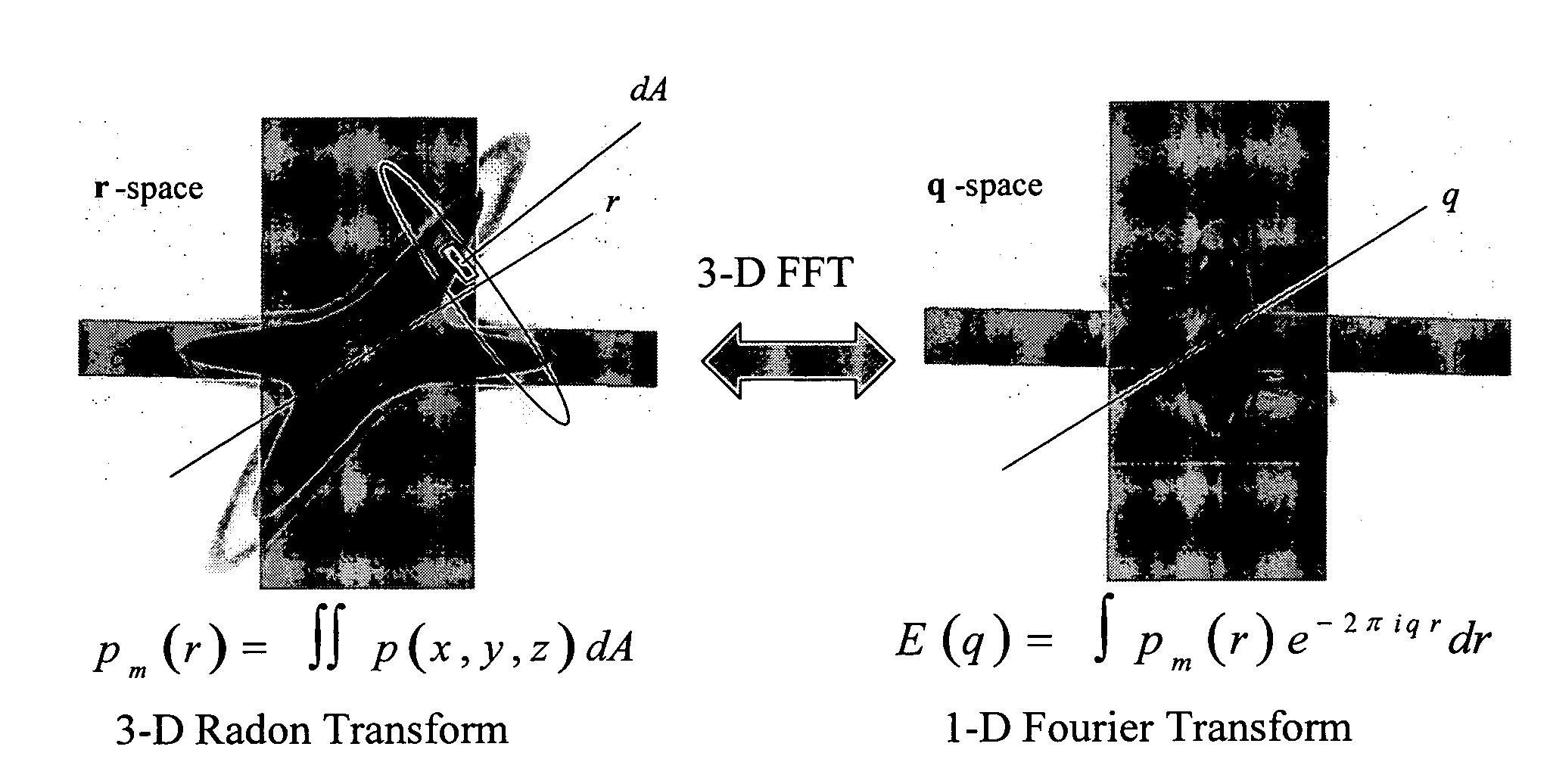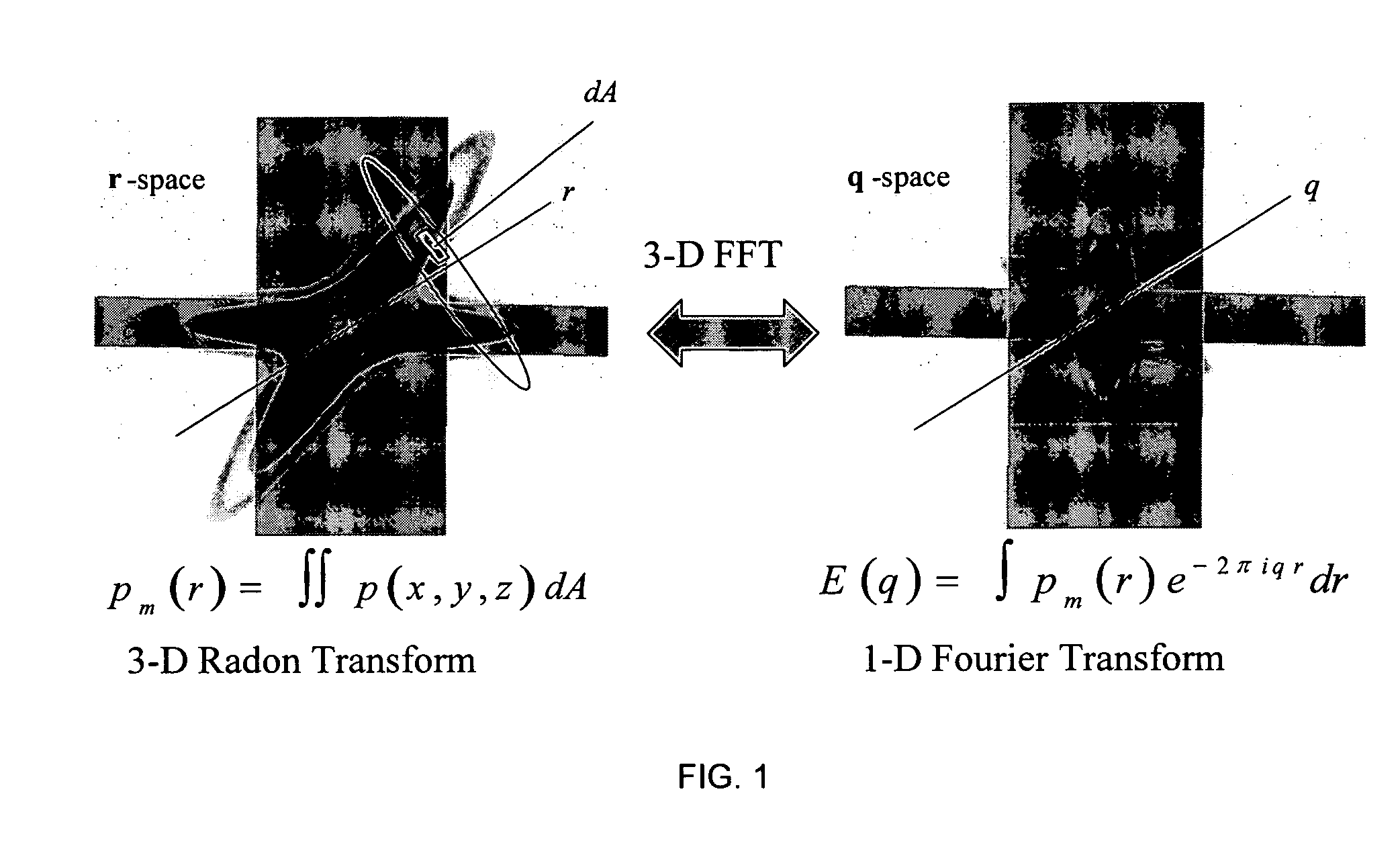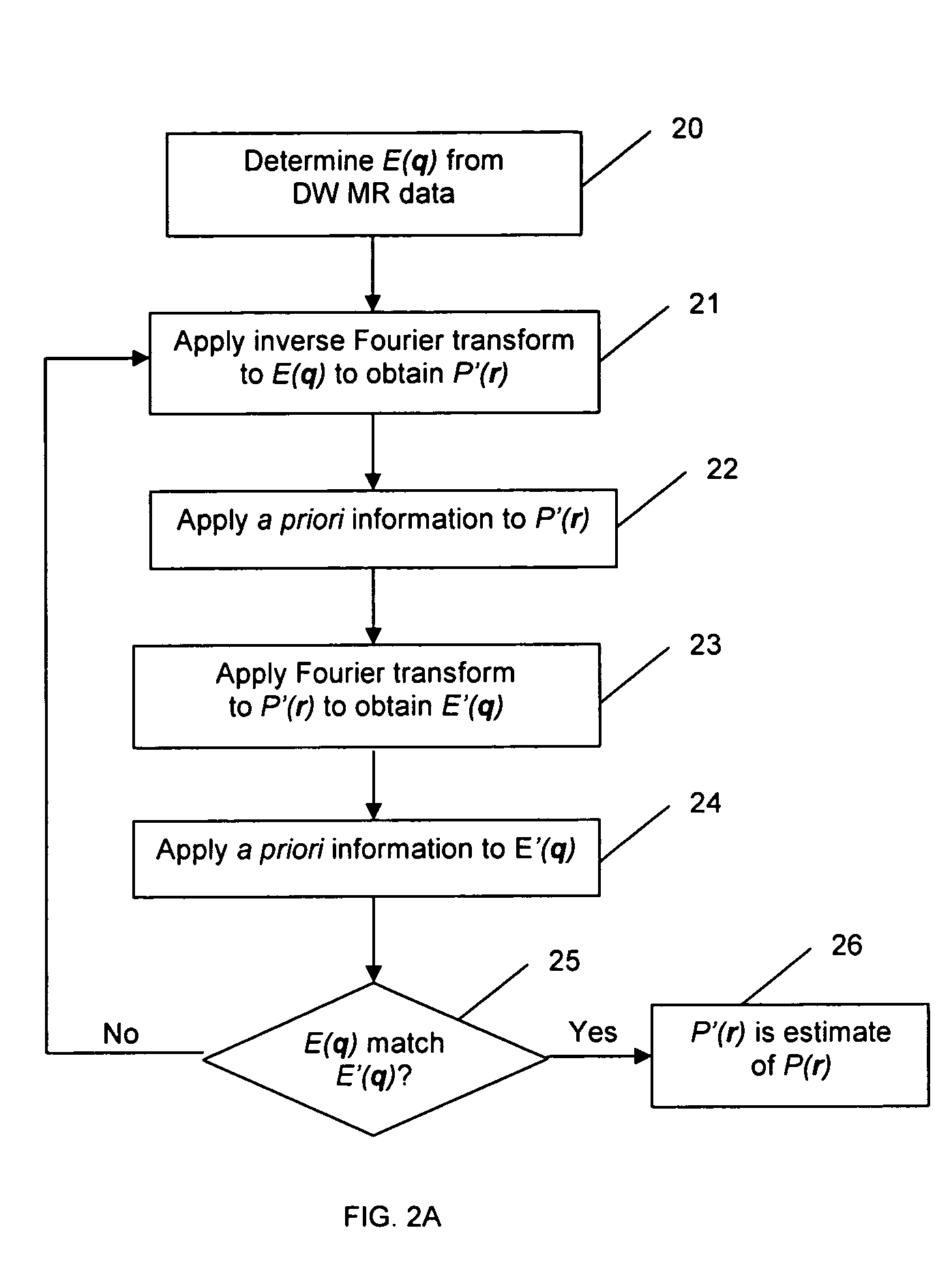Estimation of the average propagator from magnetic resonance data
a magnetic resonance and average propagator technology, applied in the field of magnetic resonance imaging, can solve the problems of not being able to meet the “short pulse gradient” approximation in the mri system of animal and human beings, and the potential of 3-d q-space mri, particularly in biological and clinical applications, is enormous but has yet to be realized, and is not feasible to achieve the approximation of short pulse gradient in the mri system
- Summary
- Abstract
- Description
- Claims
- Application Information
AI Technical Summary
Benefits of technology
Problems solved by technology
Method used
Image
Examples
Embodiment Construction
[0050]Exemplary embodiments of the invention are discussed in detail below. While specific exemplary embodiments are discussed, it should be understood that this is done for illustration purposes only. In describing and illustrating the exemplary embodiments, specific terminology is employed for the sake of clarity. However, the invention is not intended to be limited to the specific terminology so selected. A person skilled in the relevant art will recognize that other components and configurations may be used without parting from the spirit and scope of the invention. It is to be understood that each specific element includes all technical equivalents that operate in a similar manner to accomplish a similar purpose. Each reference cited herein is incorporated by reference. The examples and embodiments described herein are non-limiting examples.
[0051]According to the exemplary embodiments of the invention, an estimate of the entire average propagator may be obtained from MR diffusi...
PUM
 Login to View More
Login to View More Abstract
Description
Claims
Application Information
 Login to View More
Login to View More - R&D
- Intellectual Property
- Life Sciences
- Materials
- Tech Scout
- Unparalleled Data Quality
- Higher Quality Content
- 60% Fewer Hallucinations
Browse by: Latest US Patents, China's latest patents, Technical Efficacy Thesaurus, Application Domain, Technology Topic, Popular Technical Reports.
© 2025 PatSnap. All rights reserved.Legal|Privacy policy|Modern Slavery Act Transparency Statement|Sitemap|About US| Contact US: help@patsnap.com



